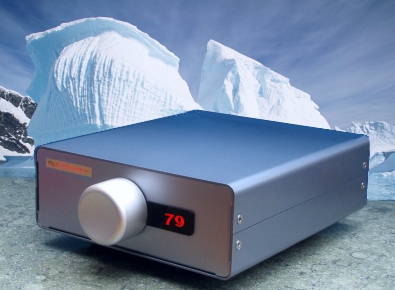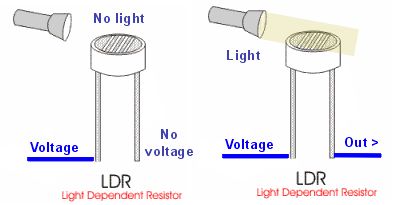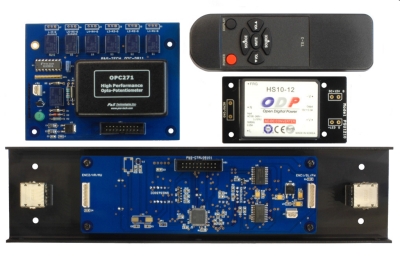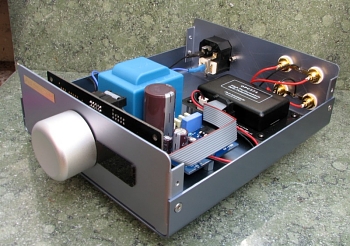

Product: P&S OPTO-POTENTIOMETER OPC-271 consisting of:
Manufacturer: P&S TechnologiesItem Price OPC271 volume control module 205:55 USD OPC271 adaptor board 15:15 USD Main control board 178:89 USD Power supply 54:55 USD Remote control 25:76 USD Control knob 24:24 USD
Reviewer: Nick Whetstone - TNT UK
Reviewed: June, 2009
For some people, hi-fi can be a cruel mistress! An endless quest for better sound quality. Just when you are satisfied with one part of your system, another part cries out for up-grading! One of the parts of the system that has been a regular topic of conversation when it comes to sonic up-grades is the volume control. Most budget hi-fi will come with a basic carbon-track potentiometer (pot). These can actually sound quite good when they are new, but with use, the carbon tracks wear, and that's when they become noisy, resulting in a scratchy sound as you adjust the volume level. Plastic film potentiometers are another option, but again as you adjust them, the tracks can deteriorate. And of course not all pots are created equal. If you have been into hi-fi for even a short time, you have probably heard of more exotic examples such as the ALPS, Panasonic-for-Audio, and Vishay Sfernice.
Many audiophiles replace pots with stepped attenuators. The sound quality of stepped attenuators is also variable due to the quality of the switch mechanisms and the resistors used in their construction. With an attenuator, there is no track to wear out but the switch contacts can wear, and even when they are new, it means another (switchable) contact point in the circuit.
Some folks swear by a Transformer Volume Control (TVC). These work in a similar fashion to the transformers in a power supply. You still need a (rotary) switch to select different windings on the transformer and some people question the quality of the signal after it has past through such a long length of (winding) wire. And TVC's are quite expensive compared to a pot or switched attenuator.
So the holy grail of volume controls has been for something where any moving parts are not in contact with the signal path, and with no tracks or switches to wear out and introduce noise into the (short as possible) signal path. One solution is to use Light Dependent Resistors (LDR's). These electronic devices change their internal resistance depending on how much light is falling on their sensor. So if you can control that level of light, you can control the resistance, and if you can control the resistance, you can make a voltage divider (that's all pots and stepped attenuators really are) and control the level of audio signal.

It's simple really, and like most ideas that seem simple, there's a catch. The performance of the LDR has to be very consistent throughout its range of operation, and must closely match the other LDR's used for the same volume control. If not, the channel balance won't be tight enough to maintain an accurate stereo image, and adjustment will be erratic. That's why although the idea of an LDR based volume control has been around for nearly half a century, they haven't become very popular for hi-fi use. However, advances in technology have resulted in LDR's with a more consistent performance, and recently there has been quite an interest in this type of volume control amongst audiophiles, particularly those who lean toward DIY (Google 'Lightspeed Attenuator'). But for those who want something with less work involved there are plug-and-play options like the DiyParadise EVA. The subject of this review is not quite plug-and-play but it does come with everything that you need to add a remote-controlled LDR volume control to your existing hi-fi. You could build it into its own case (like the sample shown above), build it into your pre amp or active buffer stage, or build it into your integrated amplifier (space permitting of course).
P&S technologies has removed all the work out of building an LDR volume control, including the tricky stuff like providing remote control and matching LDR's. In fact you don't even see the LDR's as they are safely embedded in a sealed module to prevent any external light affecting their operation. The basic version of the volume control reviewed here is for an un-balanced system, and does not provide any input selection. There are other options to enable you to have remote controlled input selection using relays. If you want a balanced version, they have other models in their range to cover that option too. To save me time and work, P&S kindly provided the review sample of the basic volume control (no input selection) in a case and ready to use. Please note this cased option is not available to customers.
 The basic kit comprises a power supply, the volume control module, an adaptor board, a main control board that also contains the display mounted on a front panel, and a remote control unit. You even get a ribbon cable to connect the adaptor board to the main control board. You will need a case to put this in if making a stand-alone volume control, some internal wiring, and some knobs to control the on-off switch and the pot (yes you can control this manually as well as with the remote control). The power supply will accept any AC voltage from 90 to 240 volts but if you want to power the modules from an existing 9-12v DC supply, you can do that as well simply by moving a jumper connector. It really isn't difficult to build one of these kits into a housing, or some existing hi-fi.
The basic kit comprises a power supply, the volume control module, an adaptor board, a main control board that also contains the display mounted on a front panel, and a remote control unit. You even get a ribbon cable to connect the adaptor board to the main control board. You will need a case to put this in if making a stand-alone volume control, some internal wiring, and some knobs to control the on-off switch and the pot (yes you can control this manually as well as with the remote control). The power supply will accept any AC voltage from 90 to 240 volts but if you want to power the modules from an existing 9-12v DC supply, you can do that as well simply by moving a jumper connector. It really isn't difficult to build one of these kits into a housing, or some existing hi-fi.
The OPC271 module mounts on to the adaptor board and that is connected to the main control panel by the supplied ribbon cable. The power supply is connected to the mains IEC socket and then to the main control board. You then wire the input and output sockets to the adaptor board, and apart from adding the knob (P&S can supply these too) you are done.
In use, the Optopot is a joy! On the review sample, the manual control was provided by a large knob on the front of the case and this had an excellent feel to it, very smooth and precise. The LED display (indicating the current volume level setting) is clear and I could easily read it from my listening position. It is also possible to adjust the brightness of the display from the remote control, a nice little touch if bright displays irritate you. The remote control worked very well. The action of the buttons was precise and the Optopot responded immediately to any adjustment sent to it. And there is even a mute button, very handy for when the phone rings!
 Once connected into the system, I set the volume so that the display on the front of the Optopot read 30 and then started to play some music. But I heard nothing! I carefully re-checked all the connections but still couldn't get any sound to come out of the speakers. So I turned the knob on the Optopot and as I increased the volume level to read over 40 on the display I heard some music coming through albeit quite feint. As the level was increased, the music got louder until at around 100 on the display, I had something like the usual listening level for that room. The settings go up to 200 providing more fine steps of attenuation than I imagine most of us will ever need. But it's nice to have such precision and makes adjusting the volume level exactly how you want it very easy.
Once connected into the system, I set the volume so that the display on the front of the Optopot read 30 and then started to play some music. But I heard nothing! I carefully re-checked all the connections but still couldn't get any sound to come out of the speakers. So I turned the knob on the Optopot and as I increased the volume level to read over 40 on the display I heard some music coming through albeit quite feint. As the level was increased, the music got louder until at around 100 on the display, I had something like the usual listening level for that room. The settings go up to 200 providing more fine steps of attenuation than I imagine most of us will ever need. But it's nice to have such precision and makes adjusting the volume level exactly how you want it very easy.
But how did it sound? Well right from the start I could hear that this is a very transparent piece of kit! It simply lets the music flow through it, un-impeded by any switch contacts and the result is a lovely fluid presentation with no signature that I could detect in either of my systems. And there isn't much else to say about the sound because it just didn't produce any of its own. Like a good (non-Norwegian) referee in a game of football, the better it performs, the less you are aware of its presence!
Whether it's me getting older, or becoming used to the convenience of the remote control with the Logitech SB3, I don't know, but I no longer consider having a remotely controlled volume control being lazy or extravagant. Now many of us use computer based audio, we can move from one album to another very easily to play random tracks, but if those albums have been recorded with differing output levels, we could be up and down adjusting the volume setting of the hi-fi every few minutes. So devices like the Optopot are very practical, as well as providing possibly the best sonic solution for controlling the volume level too. From what I have read about LDR volume controls, just about everybody who has heard one likes them, and my experience of the Optopot tells me why they do. If you are looking for the most transparent method to control the volume level of your system, I have no hesitation in recommending the Optopot based on the sample provided for this review!
© Copyright 2009 Nick Whetstone - www.tnt-audio.com